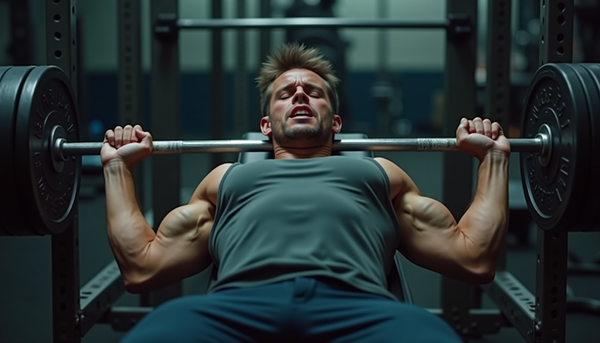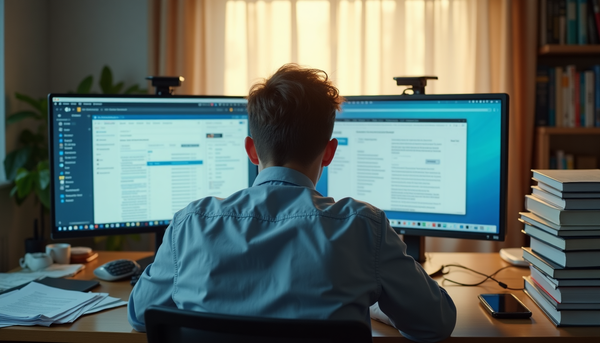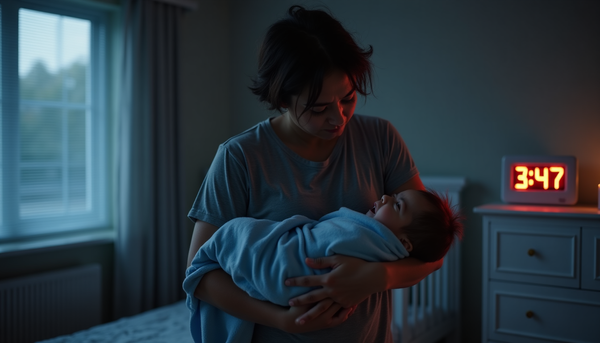The Unsexy Truth About Fall Prevention That Could Save Your Parent's Life

My grandmother was 82 when she fell getting out of the shower. One minute she was this fiercely independent woman who still drove herself to the grocery store and tended her garden. The next? Three months in the hospital, followed by a nursing home, followed by... well, you know how these stories end.
Here's what really gets me: it was completely preventable.
We're Solving the Wrong Problem
Everyone talks about falls like they're just part of aging. "Oh, you know how it is with older folks." No. I don't accept that. And neither should you.
The numbers are staggering – 3 million older adults end up in emergency rooms every year because of falls. Over 800,000 get hospitalized. The medical costs? Try $50 billion annually. But here's the kicker that really messes with my head: most of these falls happen during completely normal activities. Getting out of bed. Standing up from a chair. Walking to the bathroom.
We're not talking about extreme sports here, people.
The Problem Isn't What You Think
As a former PT, I've seen way too many families focus on the wrong stuff. They'll spend thousands on grab bars, shower seats, and fancy medical alert devices. Don't get me wrong – that equipment has its place. But it's like buying the world's best helmet while completely ignoring the fact that you never learned how to ride a bike properly.
The real issue? We've forgotten that balance is a skill. Just like riding that bike, or playing piano, or... staying upright when life throws you a curveball.
And here's what frustrates me about most "senior fitness" programs: they treat balance training like some cute add-on. Five minutes at the end of a workout, standing on one foot while holding onto a chair. That's not training – that's checking a box.
The Unsexy Truth About What Actually Works
You want to know what prevents falls? The same basic movements humans have been doing for thousands of years. No special equipment. No complicated systems. Just five fundamentally important exercises that most people completely ignore because they're... well, boring.
But you know what's really boring? Watching someone you love lose their independence because we couldn't be bothered with the basics.
1. Squats (Yes, Really)
I know, I know. "My 75-year-old mom can't do squats."
Wrong.
Your mom already does squats. Every. Single. Day. She squats to sit down. She squats to stand up. She squats when nature calls. The question isn't whether she can squat – it's whether she can squat well enough to keep doing it for the next 20 years.
Think about it this way: every time someone struggles to get out of a chair, that's their body telling you their squat is failing. And when your squat fails, everything else starts falling apart. Literally.
Start simple. Chair-assisted squats. Focus on control, not depth. The goal isn't to impress anyone at the gym – it's to maintain independence in the bathroom.
The Marcus Test: Can they stand up from a regular dining chair without using their hands? If not, that's your starting point right there.
2. Kneeling Positions (Half and Tall)
This one throws people off, but here's my reasoning: if you can't control your body close to the ground, you've got no business trying to control it six feet in the air.
I learned this from watching my physical therapy patients. The ones who could comfortably get into and hold kneeling positions? They progressed faster. They had fewer setbacks. They just... moved better.
Plus, there's something about being closer to the ground that calms down your nervous system. Your brain feels safer, so it lets you actually work on balance instead of just trying to survive.
Start with tall kneeling (both knees down) for 30 seconds. Work up to a minute. Then try half kneeling (one knee up, one down). It's harder than it sounds, and that's exactly the point.
3. Farmer's Carries (The Most Underrated Exercise Ever)
Here's a question for you: when was the last time your parent walked anywhere without carrying something? Groceries, laundry, their purse, a cup of coffee.
Exactly.
So why do we train balance only when people's hands are empty? It makes no sense.
Farmer's carries teach your body to stay upright while dealing with real-world challenges. They improve posture because you can't slouch when you're holding weight. They strengthen your core without a single crunch. And every step is essentially single-leg balance training in disguise.
Start light. Really light. Two 5-pound weights, walk 20 steps. The goal isn't to impress your neighbors – it's to train the exact scenario that happens every time they bring groceries in from the car.
4. Head Nods (The Exercise Nobody Talks About)
Okay, this one's going to sound weird, but stay with me.
Where your head goes, your body follows. Always. It's not optional – it's physics.
Most older adults spend years with their head pushed forward, staring at phones, hunched over computer screens, or just dealing with the gradual pull of gravity. When your head position is off, it throws everything else off. Your inner ear can't do its job properly. Your neck muscles get overworked. Your whole balance system gets confused.
Head nods fix this. They're simple, they require zero equipment, and they retrain the exact movement pattern that keeps your head where it belongs – over your shoulders, not in front of them.
Do them lying face down, or on hands and knees. 10-15 gentle nods, like you're saying "yes" to staying upright.
5. Ankle Mobility (Your Foundation Matters)
Your ankles are your body's first line of defense against the chaos of the real world. Uneven sidewalks, thick carpets, that one step that's slightly higher than the others – your ankles are constantly making tiny adjustments to keep you upright.
But here's what happens as we age: those ankles get stiff. Really stiff. And when your foundation can't adapt, the rest of the building suffers.
I've seen people spend thousands on balance training while completely ignoring the fact that their ankles barely move. It's like trying to build a house on a broken foundation and wondering why the walls keep cracking.
Quick test: Can they squat down and point their knee over their toes without their heel coming up? If not, ankle mobility work isn't optional – it's essential.
Simple wall ankle stretches, 30 seconds each leg, twice a day. That's it. Nothing fancy.
Let's Address the Elephant in the Room
"But Marcus, my parent won't do exercises."
I get it. I really do. The word "exercise" carries baggage. It sounds like work, like something they should do but probably won't.
So don't call it exercise.
Call it "staying independent." Call it "keeping up with the grandkids." Call it "being able to live in your own home for the next 20 years."
Because that's what this really is.
And for those who think they're "too old" or "not strong enough" – remember, we're not training for the Olympics here. We're training for life. For getting out of bed tomorrow morning. For walking to the mailbox. For not being afraid to live in your own body.
The Reality Check
Here's something most people don't want to hear: balance training isn't glamorous. It's not going to get you beach-body abs or help you bench press your body weight. It's just going to help you stay upright, stay mobile, and stay independent.
But you know what is glamorous? Being 85 and still living life on your own terms.
These five exercises – squats, kneeling positions, farmer's carries, head nods, and ankle mobility work – they're not complicated. They don't require expensive equipment or gym memberships. They just require consistency and the understanding that boring can be beautiful when it keeps the people you love safe.
Your Next Step
If you're reading this and thinking about someone you care about (parent, spouse, yourself), here's what I want you to do:
Pick one exercise. Just one. Start there.
Can't choose? Start with squats. Everyone needs to be able to stand up from a chair.
Do it three times this week. Not every day – that's how people burn out. Just three times.
Then next week, add another exercise.
The goal isn't perfection. It's progress. And progress, even tiny progress, is what stands between independence and... well, the alternative.
My grandmother never got the chance to work on her balance. By the time we all realized how important it was, it was too late. But your story doesn't have to end the same way.
The exercises are simple. The choice is yours.
What are you going to do with it?
What's your biggest concern about fall prevention for yourself or a loved one? Have you tried any of these exercises? I'd love to hear about your experience in the comments below – the real, honest stuff. This is too important for surface-level conversation.




